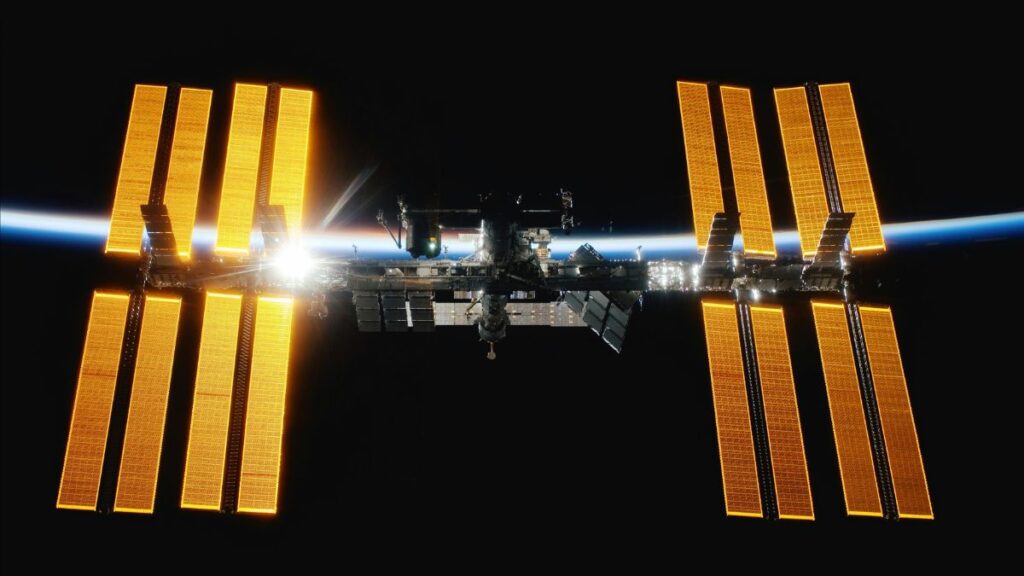
NASA scientists have recently identified drug-resistant bacterial species, commonly referred to as superbugs, on the International Space Station (ISS). This discovery has raised significant health concerns for astronauts aboard the spacecraft, which orbits 475 km above Earth’s surface. The implications of these findings are profound, not only for the well-being of space crew members but also for our understanding of microbial behavior in extreme environments.
Search
Recent Posts:
- OpenAI Brings ChatGPT to be used in WhatsApp: Here’s How It Works and What You Can Do To Use It.
- Realme 14x 5G: A Budget Smartphone With Premium Features.
- Exploring Apple Genmoji: A New Era of Custom Emoji Creation.
- 2024 United States Presidential Election: Donald Trump Declares Victory in 2024 Presidential Election
- Chancellor Olaf Scholz’s Visit to India: Advancing Indo-German Cooperation on Defense, Trade, and Regional Stability.
The Emergence of Drug-Resistant E. Bugandensis
The species found on the ISS are isolates of E. bugandensis, a bacterium known on Earth for causing a variety of infections in humans. However, the strains identified on the space station are distinct from their terrestrial counterparts. This distinction is particularly concerning because these ISS-derived strains have demonstrated resistance mechanisms that pose a threat to astronaut health.
Resistance Mechanisms Uncovered
In a study published in the journal Microbiome, researchers noted that “ISS E. bugandensis strains have shown resistance mechanisms.” This discovery highlights the adaptive capabilities of microbes in isolated and extreme environments like the ISS. The resistance observed in these strains makes them formidable opponents against traditional antibiotic treatments, raising the stakes for infection control in space.
Implications of the Findings
The implications of these findings are two-fold. Firstly, the study provides valuable insights into microbial behavior, adaptation, and evolution in isolated environments with unique conditions such as microgravity, elevated CO2 levels, and increased solar radiation. Understanding how these microbes evolve and adapt can inform broader biological and medical research.
Secondly, the presence of these superbugs underscores the urgent need for robust preventive measures to ensure the health and safety of astronauts. The potential risks associated with pathogenic or disease-causing threats in space necessitate the development of effective strategies to mitigate these dangers.
In-Depth Study Led by NASA’s Jet Propulsion Laboratory
The study, led by Kasthuri Venkateswaran of NASA’s Jet Propulsion Laboratory, involved comprehensive tests to understand the genomic intricacies of ISS-derived E. bugandensis. The research aimed to compare these space-adapted strains with their terrestrial counterparts to identify the specific adaptations that allow them to thrive in the ISS’s controlled environment.
Unique Environment of the ISS
The ISS presents a unique environment characterized by microgravity, increased CO2 levels, and elevated solar radiation. These conditions are vastly different from those on Earth and play a significant role in the behavior and evolution of microorganisms. The research revealed that the genomes of the bacterial species collected from the ISS harbor resistance to 23 different classes of drugs, including cephalosporins, cephamycins, fluoroquinolones, and nitroimidazole antibiotics.
Historical Context and Microbial Tracking Mission
The construction of the ISS began in 1998, and since then, there have been over two hundred missions to the station. These numerous missions likely contributed to the transportation and introduction of various microbes to the ISS environment. To better understand the microbial ecosystem of the space station, NASA undertook a special exercise called the Microbial Tracking 1 mission in 2015 and 2016.
During this mission, scientists isolated 13 strains of multi-drug resistant E. bugandensis from various locations within the space station. This extensive microbial tracking effort was crucial in identifying and understanding the presence and behavior of superbugs on the ISS.
Health Risks and Preventive Measures
The discovery of drug-resistant bacteria on the ISS raises significant concerns about the potential health risks for astronauts. In space, where medical resources are limited and the environment is inherently challenging, the presence of superbugs could lead to severe health issues if infections occur. The findings highlight the need for stringent hygiene protocols, regular microbial monitoring, and the development of new treatment strategies to combat resistant strains.
Broader Implications for Space Missions
The presence of superbugs on the ISS also has broader implications for future space missions, including long-duration missions to Mars or other distant destinations. Understanding microbial adaptation in space is critical for developing effective countermeasures to protect the health of astronauts on extended missions. This knowledge is essential for ensuring the success of human exploration beyond Earth’s orbit.
The discovery of drug-resistant E. bugandensis on the International Space Station is a significant development with far-reaching implications. It highlights the remarkable adaptability of microbes in extreme environments and underscores the urgent need for robust preventive measures to ensure the health and safety of astronauts. As NASA and other space agencies continue to explore the final frontier, understanding and mitigating the risks posed by superbugs will be a critical component of mission success and human health in space.
To read more topics, please visit: https://insightfulbharat.com






